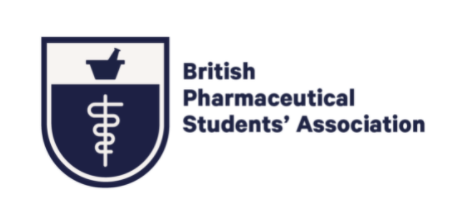Do you understand how Pharmacy Funding works?
Emmanuel Chisadza (Publication Author)
Every time I watch Dragons Den, I get annoyed by how many people lose out on potential investment because they don’t know their numbers. Many people stumble over basic questions on turnover and gross profit. Having left university many years ago, I’m not sure how much of these terms are part of the pharmacy curriculum now. Back in the 90s we did a couple of lectures on business management run by a visiting pharmacy owner. It was basic, and we were never examined on it. As a result, many of us started our careers oblivious to the ins and outs of pharmacy business management. With the demise of independent pharmacy ownership, it is more likely that most pharmacy graduates will take up jobs where the nuts and bolts of running a profitable pharmacy business will not be part of their day-to-day work.
To get us started, let’s begin by defining some of these terms.
Turnover is the total sales generated by a business in a specific period. It’s sometimes referred to as gross revenue, or income. Turnover represents the total income of the business during a set period – that is, the ‘net’ sales figure.
Profit, meanwhile, is a measure of the earnings that are left after any expenses have been deducted. To complicate things further, there are also two different ways in which profit might be measured. Gross profit refers to sales, minus the cost of the goods or services sold – that is, the sales margin. Net profit, meanwhile, is the figure that’s left over during a specific period after all expenses (such as administration and tax) have been deducted.
Community pharmacy has various income streams. Typically, community pharmacy generates 80% of its income from the NHS contract and the remaining 20% from over-the-counter (OTC) and other private sales. The current trend is that of diminishing returns from OTC sales as supermarkets and internet sales gain market share.
NHS income was traditionally dispensing-focused. The introduction of the 2005 Pharmacy Contract saw the introduction of service income streams and payments for quality indicators like staff levels. This was a shift from the volume-based model. Successful pharmacies have been those that have focused on topline sales and profitability from dispensing, retail revenue and services (NHS-commissioned and private). A prudent approach to healthcare delivery has enhanced team productivity by making better use of support staff and keeping a close eye on cost controls. With 80% revenue from the NHS contract, it is perhaps wise to give this more attention in this brief discussion.
Though income for pharmacies may vary according to the mix of products dispensed and the number of additional fees earned, calculations made by the Pharmaceutical Services Negotiating Committee (PSNC), posit that a pharmacy dispensing 7000 items a month should roughly accrue £10,934 from fees and allowances. An additional £5,444 can be realised as buying profit, giving a total monthly income of £16,377 (October 2018).
For every dispensed item, pharmacies are reimbursed at an agreed price as listed in the Drug Tariff. Buying profit is generated by ensuring that goods are purchased at a price lower than the listed price. Bulk buying is one obvious way this can be done. The pharmacy chains are better placed to exploit this than the small independent pharmacies. Admittedly, various rebate and discount schemes exist which all contractors can take advantage of. It is for this reason that “discount deductions” are applied to all contractor payments.
Fees and allowances are compounded from some of the following essential services payments:
Dispensed items attract a single activity fee of £1.29
Preparations manufactured or imported under a specials licence attracts £20.00
£2.60 for elastic hosiery measuring and fitting.
£2.50 for Liquid methadone dispensing and an additional £0.55 for each extra dose packaged separately
Products with a net ingredient cost over £100 attract a fee equivalent to 2% of the cost
Allowances include repeat dispensing, electronic prescription, establishment and practice payments.
Advanced service payments include
£20 - £28 for each completed New Medicine Service (NMS) provided depending on the total number of patients who receive the service in the month. The maximum allowable number depends on the number of prescription items done a month. A pharmacy dispensing 7000 items a month can perform and be paid for a maximum of 35 NMS.
The fee for provision of each Medicines Use Review is £28. Pharmacies that sign up to provide Advanced Services before 1st October in any financial year can conduct and be paid for a maximum of 400 reviews in the financial year (1st April – 31st March).
The £16,377 stated above would thus represent 80% of the pharmacy’s gross profit. Assuming proportionality, quick maths would give us a gross profit of about £20.471. It is from this figure that operating expenses like rent, rates and water, wages, insurance, marketing and advertising, insurance and accountancy, licenses, heat and lighting and IT can be deducted giving the net profit.
With regards to how much money you will earn as a community pharmacist, the PSNC is perhaps one the most important organisations. They represent NHS pharmacy contractors in negotiations with the Department of Health and Social Care. Their stated goal is to develop and increased the range of high quality and fully funded NHS community pharmacy services. They effectively have a say in how much money community pharmacy gets from the government. For more information on pharmacy funding please visit www.psnc.org.uk/funding.
NB. The recently announced funding settlement has seen no changes to the global sum but inevitably there will be changes to how the sums are allocated.

